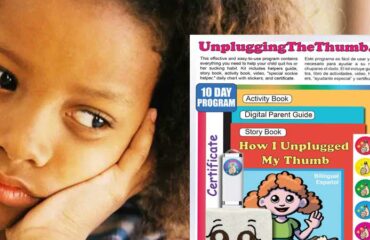Myo Techniques Cerebral Palsy Articulation
I have an elementary-aged client with cerebral palsy. No cognitive deficits. Great expressive & receptive language skills in Korean and English. But articulation is so hard! We’ve made progress on lip-related sounds, but she just cannot keep her tongue from thrusting out on /s, z, sh/, plus /t, d/ sounds are imprecise and /l/ is nasalized into /n/. I’ve tried every trick I know. Do you think orofacial myology might provide useful techniques to use with this client? Do your techniques work with clients with CP? Also, I notice that your workshop in Boston is many months from now –do you think I could get similar (or, at least, adequate for use with this client) knowledge from your Mega Myo kit you sell online? Please advise. Warmly, -E
Those are all good questions. Hmm, let me see where to begin. Of course the difference between a 6 year old in first grade and an 8 or 9 or 10 year old is pretty vast, but it sounds like she’s quite a good worker, regardless…. and a smart kiddo, too! Ok, you mention the lip related sounds. Bear in mind that that encompasses vowels and diphthongs as well as the consonants…just in case she still needs to sharpen up in those areas as well. Next you talk about the thrusting of /s,z,sh/ (and I’m sure CH and J and ZH, also!) and /t, d/, which is pretty astute of you since some SLPs miss the /t/ and the /d/. These sounds are intricately related to orofacial myology concerns and the areas addressed in my particular courses. The Myo Manual does not target specific sounds but rather gets at the root causes of the problem and addresses the areas of weakness or difficulty before even thinking about going ahead and trying to correct the sound errors. Although orofacial myology, as I teach it, is an endless topic with more and more info as you go along, I do set the stage for you so that the client is maximized in all the areas necessary before doing articulation treatment/therapy. As far as /l/ is concerned, when we go over the thorough hands-on oral examination and evaluation, I note to attendees how /l/ is one of the indicators that usually is present in orofacial myology disorders. It’s the “dead giveaway” much of the time and the early lingual basic skills address it right away, as do some of the exercises in Phase One of the Myo Manual Treatment program. The nasalized /n/ might or might not be indicative of an orofacial myology problem, depending upon other findings. I’d be sure to rule out sub mucus cleft or other possible related causes. Ankyloglossia, depending upon where the attachments are and other factors can also lead to nasalization of the /n/ and we definitely get heavily into determination of restricted lingual frenula. You ask about the value of the Myo Manual techniques with CP. I have actually been having a two day discussion with several highly trained SLPs and an orthodontist about my approach, which is this: The particular “label” or condition is less important than the actual symptoms. Thus, a child with cerebral palsy, another with high level Down Syndrome, one with a lisp, a stroke patient with drooling or a post partial glossectomy might ALL end up with some of the same exercises, because of a need to maximize them in the same way for a particular area of weakness….prior to moving forward with treatment plans. Purchasing the Myo Manual Kit will help you and your clients. However, if you can attend the course, it will open a lot more to you and your future therapy and we would be happy to send the Myo Kit to you prior to the course if you request we do so along with your registration. I do understand that it is a large outlay for the fee for the course but I can honestly tell you that past participants constantly tell me that they would have paid 10 times the amount had they realized how it enhanced their therapy and confidence. Let me know your thoughts. I hope we get to meet and work together….



